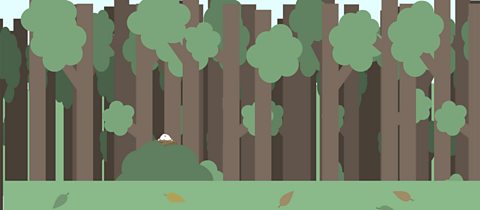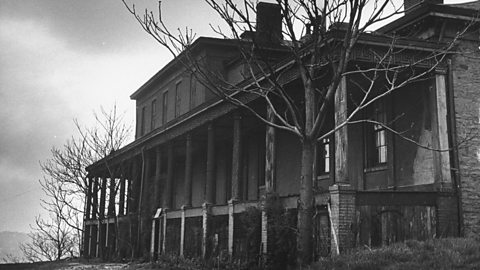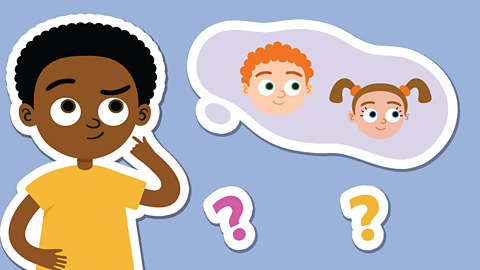Watch: Different genres in fiction

There are lots of different types (or âgenresâ) of fiction writing, such as science fiction, fairy stories, scary stories (often called horror stories) and mysteries.
Each has a different style and set of rules but all the stories are made up by the author.
Watch this short clip to learn about different genres in fiction writing.

Learn about different types of fiction genres.
NARRATOR
There are many different types of fiction genres, but they all have one thing in common: that the stories are made up.
If these ducks were in a mystery story, then there might be a crime for a detective to solve and a mystery to work outâŠ
Or if the ducks were in a science-fiction story, it might take place in a futuristic world, where everything is wildly different and fantastic.
Each genre has its own style and set of rules.
So whether itâs a fairy story where the prince and princess live happily ever afterâŠ
Or a scary story with frights and shocksâŠ
Paying attention to genre is important when reading and understanding a story.
Watch: What is a setting?

A setting is where and when a story is set. When writing a story, the setting is really important. Thinking about these things will help your writing.
- Think about what the setting is like, is it day-time or night-time?
- How does the setting impact the characters?
- Can you picture the setting clearly? This will help you describe it to the reader.

Get creative with your settings!
When writing a story, setting is really important!
A setting is where and when a story is set.
It could be a beach?
It could be in the jungle?
Think about what the story is about, and where a reader might expect to find the lead character.
Hey Mick! How about on a stage?
But think beyond just the location.
Whatâs it like on the stage?
Is it night time?
Are there spotlights?
Are people cheering?
Or is it daytime, on a building site, in winter?
Watch: Story settings
The setting of a story is where and when it takes place and usually tells the reader how it looks and feels, so they can imagine it in their minds
How the setting is described will depend on the genre of the story.

For example: The setting is a forest.
In a fairy tale this might be an enchanted forest, with fairies flying around, unicorns galloping through the trees and large colourful flowers blooming.
However, if the setting were in a scary story, the forest might be dark and eerie, with no leaves on the trees and monsters hiding behind them!
Watch this video now to learn more about the different techniques writers use in order to choose and describe a setting for their story.

Learn how to create a story setting.
NARRATOR
How to create a setting.
A setting of a story tells us where and when it is taking place. Letâs choose a setting, it can be absolutely anywhere.
Ah, excellent, a boat drifting aimlessly out at sea.
Use your words to paint a picture for your readers. Give lots of detail, along with plenty of adjectives. So, what sort of ship should young Jane here be on? It could be an old ship, and her story could be set in the past. And where is the boat?
The barnacle covered leaky galleon drifted across the shark infested waters, towards a rocky desolate looking island. That sounds like a great setting. She looks a bit nervous, doesnât she? Well, so would you be if you were her! Look at that large storm cloud â no, wait. Look at that towering storm cloud. The season or weather can have a big impact on your setting.
The more descriptive you can be for the reader, the better. You can use metaphors, comparing two things which arenât alike, but are something in common. The storm whips the sea up into great walls of water. You can also you can use similes, comparing things using âlikeâ and âasâ. The waves throw the ship around like a wild animal toying with its prey. Use all your senses to describe your setting, as this helps bring it to life for your reader. After the storm, the sea was calm. You can see it stretched out towards the horizon, like blue velvet.
[DOLPHIN NOISES]
NARRATOR
What can you hear? Seagulls calling on the sea breeze. Maybe you can smell something? The salt crusted sails? And I can almost taste that rotten looking fish stew! Haddock⊠with a tangy cat vomit aftertaste! Being on a ship means that young Jane is trapped, by this fearsome pirate and canât escape her horrible food!
Good authors choose their setting with care, and select a setting that is perfect for the story they want to tell. Would your story be as exciting if it wasnât on a pirate ship in the middle of the ocean? Would Jane be as scared of the pirate if she was on a fancy cruise ship? No, I donât think so. But that setting could work for an entirely different story.
(shouts) Look out for that iceberg!
[SHIP HORN, CRASH]
NARRATOR
°żŽÇ±èČőâŠ
Techniques to use in writing
You can make your writing more descriptive by using the following techniques:
| Technique | Example |
|---|---|
| Adverbs (words that describe a verb) | The wind blew fiercely. |
| Adjectives (words that describe a noun) | The magnificent trees loomed overhead. |
| Metaphors (comparing one thing with another using âwasâ or âisâ) | The sea was a boiling cauldron. |
| Similes (comparing one thing with another using the word 'like' or âasâ) | Seagulls, like grey ghosts, drifted across the sky. |
| Sensory details (what you can see, hear, taste, feel or smell) | Jo heard the fog-horn blast and tasted the salt on her tongue. She stumbled over the hard, pointy pebbles. |
Activity 1
Activity 2

Read the following setting description.
Abandoned House on Dark Drive
There has been an abandoned house at the bottom of Dark Drive for as long as anyone could remember.Tall, twisted trees surrounded the building keeping it in a cloak of darkness, even on the brightest of days. The gnarled, long branches looked like witches fingers ready to grab any intruder who entered. The overgrown garden was littered with brambles and thorn bushes. The house itself was not in any better shape. Dark green ivy twisted up the house covering the bricks. The windows were filthy and cracked. It was lifeless. Silent. No one dared even go near it, so what lay inside was a mystery.

What type of story do you think this is from?
On a piece of paper write down a list of eight different words or phrases from the text that help to describe the setting. For example: gloomy, threatening angles.
Now choose two sentences from the passage and rewrite them using new adjectives (describing words). Make sure the new words you add fit with the genre of the story.
For example:
Before: Tall, twisted trees surrounded the building keeping it in a cloak of darkness, even on the brightest of days.
After: Towering, gnarled trees surrounded the building keeping it in complete blackness, even on the sunniest of days.
You can check your answers with this
Play our fun English game Crystal Explorers. gamePlay our fun English game Crystal Explorers
Use grammar, punctuation and spelling skills to explore jungles, caves and tombs on your mission!

More on Writing
Find out more by working through a topic
- count62 of 93

- count63 of 93

- count64 of 93

- count65 of 93
